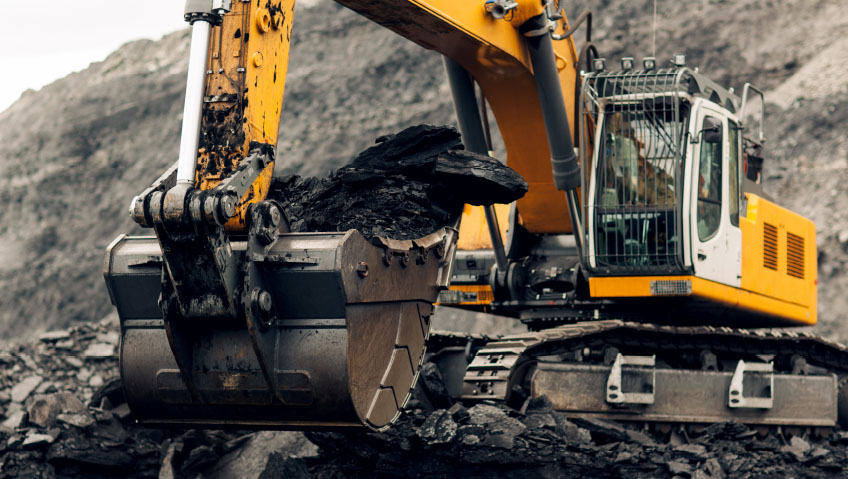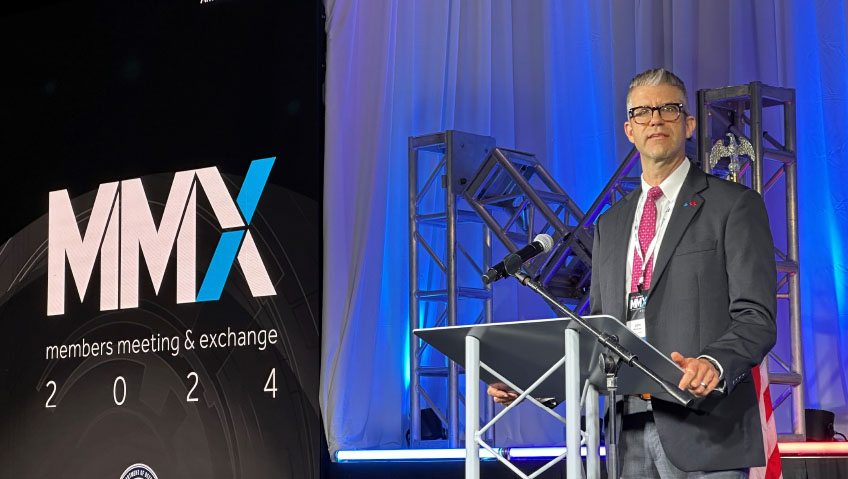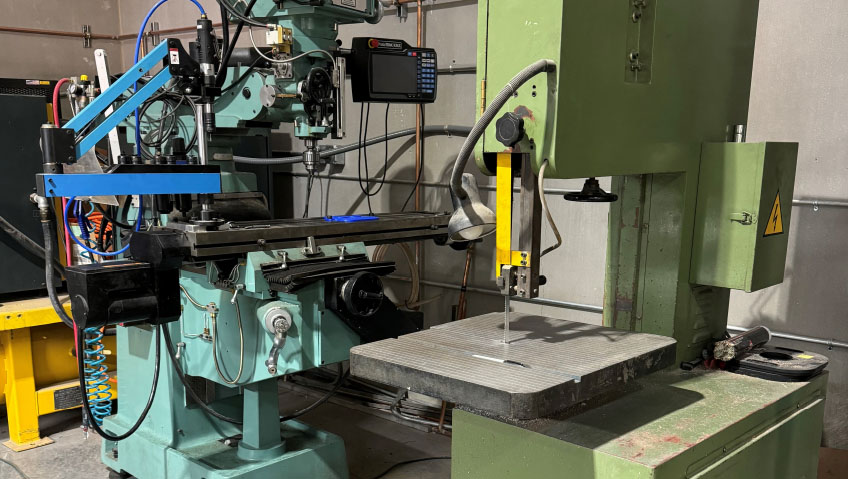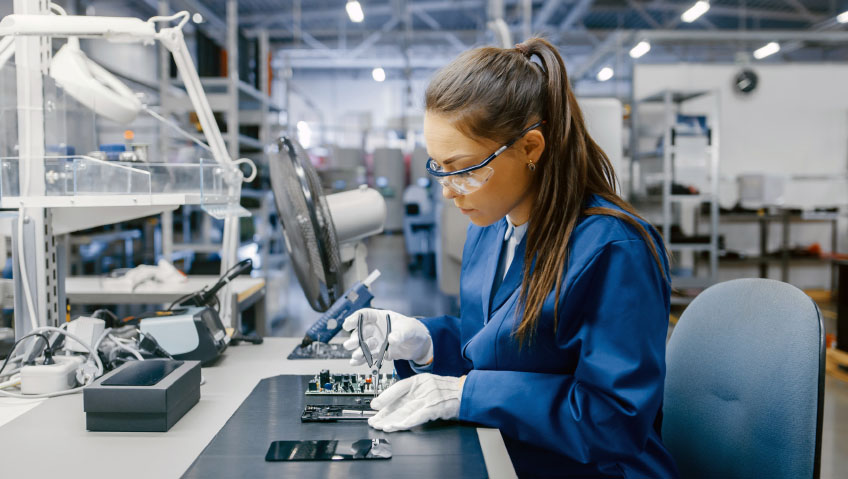As mining operations evolve to meet the challenges of efficiency, environmental impact, and safety, so too do the vehicles that power them. In a world where productivity and sustainability must go hand in hand, innovations in mining fleets—including haul trucks, bulldozers, and wheel loaders—are pushing the boundaries of what these machines can achieve.
At MINExpo 2024, held this September in Las Vegas, mining industry leaders unveiled a suite of high-tech solutions aimed at enhancing productivity while reducing carbon footprints and fuel costs. Organized by the National Mining Association (NMA), MINExpo is the world’s largest mining trade event and serves as a launchpad for cutting-edge machinery built to tackle the toughest demands of modern mining.
Komatsu, for example, used the event to introduce the PC4000-11E hydraulic mining excavator, a formidable machine manufactured with an eco-friendly sensibility.
“The electrically powered hydraulic mining excavator merges the powerful digging force of high-performance diesel machines with the lower carbon footprint of an electrically powered machine. Built to endure the toughest mining operations, the PC4000-11E features robust components for exceptional durability and reliability in the harshest conditions,” states a September 24, 2024 Komatsu press release.
The PC4000-11E’s electric drive reduces emissions by roughly 95 percent and eliminates the need for diesel fuel—drastically reducing overall ownership costs compared to a conventional Tier-4 diesel engine machine, says Komatsu.
Komatsu also showed off its new Power Agnostic 930E haulage truck at MINExpo. “Power agnostic” means the truck can run on standard diesel but also be eventually transitioned to future clean energy sources, including hydrogen fuel cells. This capability enables customers to “future-proof” their mining fleets, boasts a September 24, 2024 Komatsu press release.
Future-proofed or not, vehicles used in mining tend to be very large. Komatsu’s surface mining wheel loaders include the WE1350 with an operating weight of 214 tons and bucket capacity of 22.9 cubic meters; the WE1850, with a weight of 295 tons and bucket capacity of 32.8 cubic meters; and the WE2350, with a weight of 293.5 tons and bucket capacity of 40.5 cubic meters. Komatsu also makes huge hydraulic mining excavators such as the PC5500, which weighs between 537 and 556 tons and has a bucket size of 29 cubic meters; the PC7000, which weighs from 678 to 696 tons, with a bucket size of 38 cubic meters; and the PC8000, with a weight of 769 to 790 tons and bucket size of 42 cubic meters.
Mining haul trucks are equally gargantuan. The 798 AC electric drive mining truck, exhibited by Caterpillar at MINExpo 2024, is 51.44 feet long and 48.85 feet in height with the body raised. The 3,500 hp 798 AC can deliver a payload of 372 metric tonnes (410 tons), while offering simplified maintenance and high speed on grade.
Caterpillar also unveiled the new R1700 XE-load-haul dump (LHD) loader at MINExpo 2024. Built for underground mining operations, the battery-electric R1700 XE gives off zero emissions, thus reducing air pollution in a confined environment while also generating less heat. Fitted with a lithium-ion battery pack, the R1700 XE has a peak rated power of 250 kW/335 hp and can be fully recharged in under 20 minutes using a dual MEC500 Mobile Equipment Charger. Its payload is 15 tonnes and safety features include two emergency exits, enhanced camera options, a fire suppression system in the cab, and improved visibility and lighting coverage.
Mining vehicle manufacturer Liebherr also debuted several innovative mining vehicles at MINExpo 2024, including the PR 776. This “flagship mining dozer” as a September 24, 2024 Liebherr press release calls it, weighs from 71,800 to 73,189 kilograms, has a blade capacity of 18.5 to 22 cubic meters, and features hydrostatic drive technology and an engine output of 565 kW/768 hp.
Liebherr unveiled its new zero-emissions T 264 battery-electric haul truck as well. Capable of autonomous operation, the T 264 was built in partnership with a firm called Fortescue Zero, which designed the vehicle’s 3.2 MWh battery. An automated quick charger option can charge T 264 trucks in under one hour. If all goes to plan, the T 264 battery-electric haul truck will undergo onsite validation testing at the end of next year.
“Liebherr’s mining dozers rip, push, stockpile, clear and reclaim in mines around the world,” states the company’s website. Liebherr diesel engines are developed with durability in mind and have been used for decades in “the harshest operating conditions… their robust design and cutting-edge technology ensure maximum operational reliability and longevity. The tried-and-true Liebherr hydrostatic drive system eliminates high-wear components such as gearboxes, steering clutches, or service brakes. Instead, high-quality hydraulic pumps and motors operate virtually wear-free, offering exceptional operational durability,” adds a September 24, 2024 Liebherr press release.
At MINExpo, the T 264 was fitted with 50/80R57 XDR SPEED ENERGY tires from tire giant, Michelin. This first-of-its-kind energy-efficient tire for mining vehicles utilizes a flexible tread and energy-reducing rubber compound that enables it to run at cooler temperatures, increasing the energy that propels the truck. Better fuel efficiency and fewer carbon emissions are the result. The Michelin XDR 4 SPEED ENERGY tire is expected to be commercially available next year.
“This cutting-edge innovation allows vehicles such as rigid dump trucks to minimize energy consumption using a new energy-saving compound. When a mining vehicle carries a load and operates on various terrains, whether hard or soft, the tire deforms and flexes, generating heat that results in energy loss and requires the vehicle to exert more effort to move forward,” states an article titled ‘Michelin Introduces ‘First-Ever’ Energy Efficient Tire’ posted September 26, 2024 on the website of magazine.
Indeed, mining vehicles are becoming increasingly futuristic and sporting features such as the Komatrax Plus Health Monitoring System. This solution from Komatsu provides real-time and stored data regarding machine operation. If a critical malfunction is detected, the Health Monitoring System will send a fault message to the digital display inside the cab, alerting operators to the problem. In such situations, the Health Monitoring System will also shut down the engine then compile a failure analysis report that can later be downloaded.
Komatsu’s MineCare and mRoc (Modular Mining) solutions, meanwhile, provide maintenance management in real time, and automatically detect component problems to prevent catastrophic failure. MineCare and mRoc are designed to boost uptime and reduce maintenance expenses.
Liebherr’s new PR 776 crawler dozer is fitted with advanced Operator Assistance Systems (OAS) which aid in blade stabilization in fine grading applications and enable automatic blade positioning in 2D grade operations. OAS is also available on other Liebherr dozers.
The PR 776 is also compatible with the Liebherr Remote Control (LiReCon) system. Dozers fitted with cameras, microphones, and a radio link transmitter and receiver are controlled by an operator at a teleoperation stand. The LiReCon system enables speedy shift changes between operators, reducing downtime and enhancing operator safety by removing the need for a human to occupy the cab in hazardous conditions.
Mining vehicles from Caterpillar can be equipped with Cat MineStar, a suite of technologies that warn operators of hazards, track time, location, and performance; enhance communications via audio and video; and crunch data to create reports about productivity and safety. Specific Cat MineStar solutions include Cat MineStar Command, a solution that enables autonomous hauling (the new Cat 798 AC is configured with this feature), and Cat MineStar Detect. The latter includes a safety system that identifies operator fatigue and distraction, uses radar and cameras to detect objects, vehicles, and hazards, and communicates information about vehicle proximity from machine to machine.
Like Komatsu, Caterpillar is also looking to “future-proof” its vehicles. To this end, Caterpillar has designed a modular Cat 793 mining truck platform “with powertrain flexibility [including] diesel, mechanical, diesel electric, and battery electric options,” according to a September 19, 2024 Caterpillar press release. “All current diesel electric and battery electric large mining truck platforms are also compatible with the recently announced Cat Dynamic Energy Transfer System, providing immediate benefit to mine sites that want to lower their operating costs and greenhouse gas emissions while providing flexibility for the future,” adds the release.
For all these technological developments, certain basics still need to be considered for mining vehicles to properly perform their duties. A piece titled ‘Mining Truck Considerations: Is Bigger Always Better?’ posted March 31, 2022 on the Caterpillar company blog, offers pointers about using large mining haul trucks. Big trucks require wide roads, which need to be well-maintained, and as such, mining firms might need to invest in big motor graders for road-maintenance purposes.
“Another consideration is the length of the haul and the percent of time a truck spends loading vs. hauling. If hauls are longer, then switching to a larger truck will mean more material is being carried that longer distance—and the costs come down. With shorter distances, smaller trucks can compete as the lower-cost option,” states the Caterpillar blog.
Overall truck operating costs should not be ignored as well: “While it’s true that larger trucks deliver higher productivity and overall lower cost per ton, it also costs more to operate them in terms of fuel usage, maintenance, et cetera,” continues the blog.
In other words, sophisticated as the latest mining vehicles may be, owners and operators still need to factor in age-old concerns about cost and size to achieve maximum value from their mining fleet. The advancements highlighted at MINExpo 2024 signal a transformative period in the mining industry. With electrification, AI-powered monitoring, remote operation capabilities, and future-proof powertrain options, these vehicles represent a shift toward a more resilient, environmentally conscious approach to mining. However, even the most advanced technology must contend with the practical demands of cost, maintenance, and efficiency—timeless considerations that determine a vehicle’s true value over time.
As mining companies adopt these sophisticated machines, balancing innovation with these operational fundamentals will be key to maximizing the benefits of a future-ready mining fleet.






